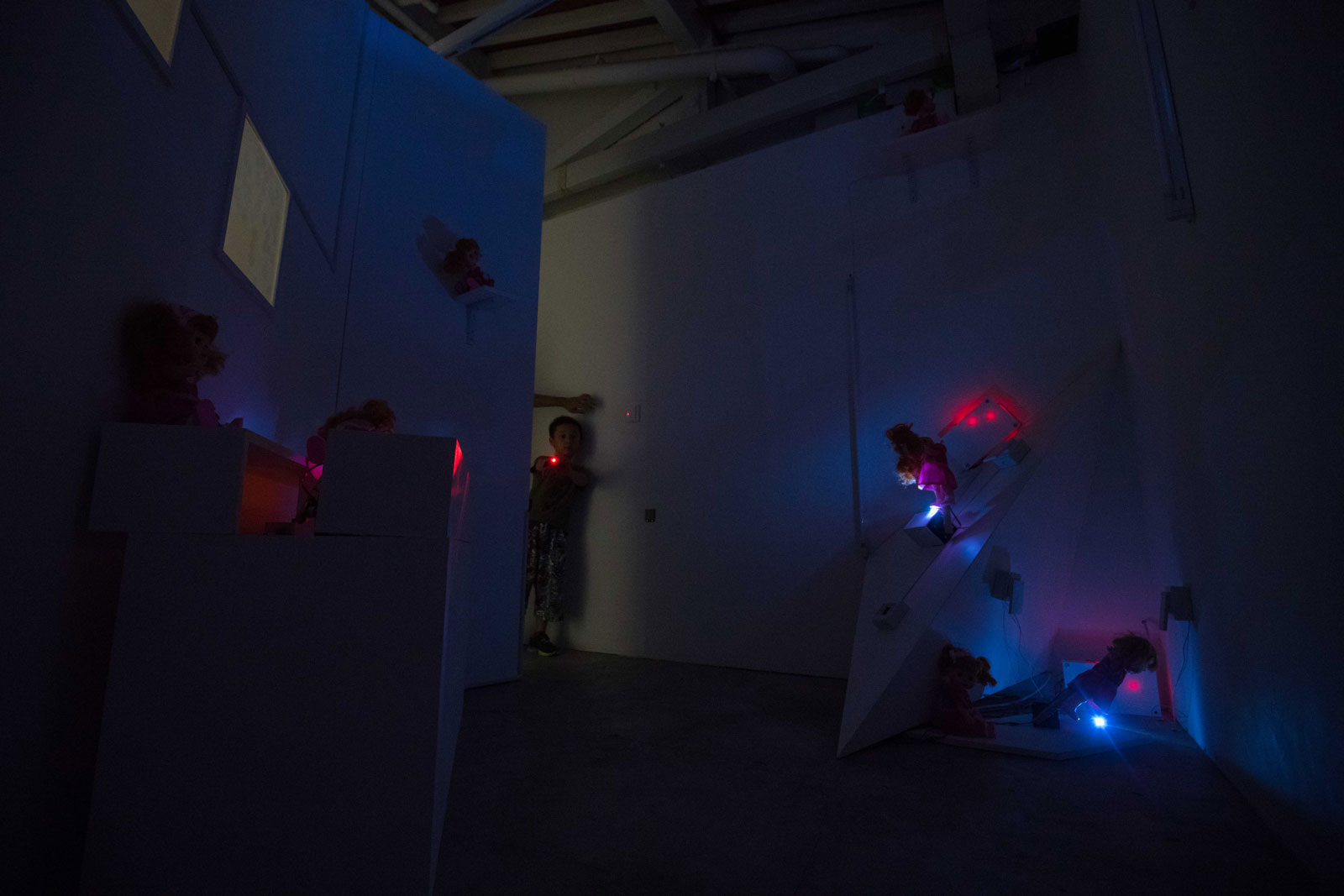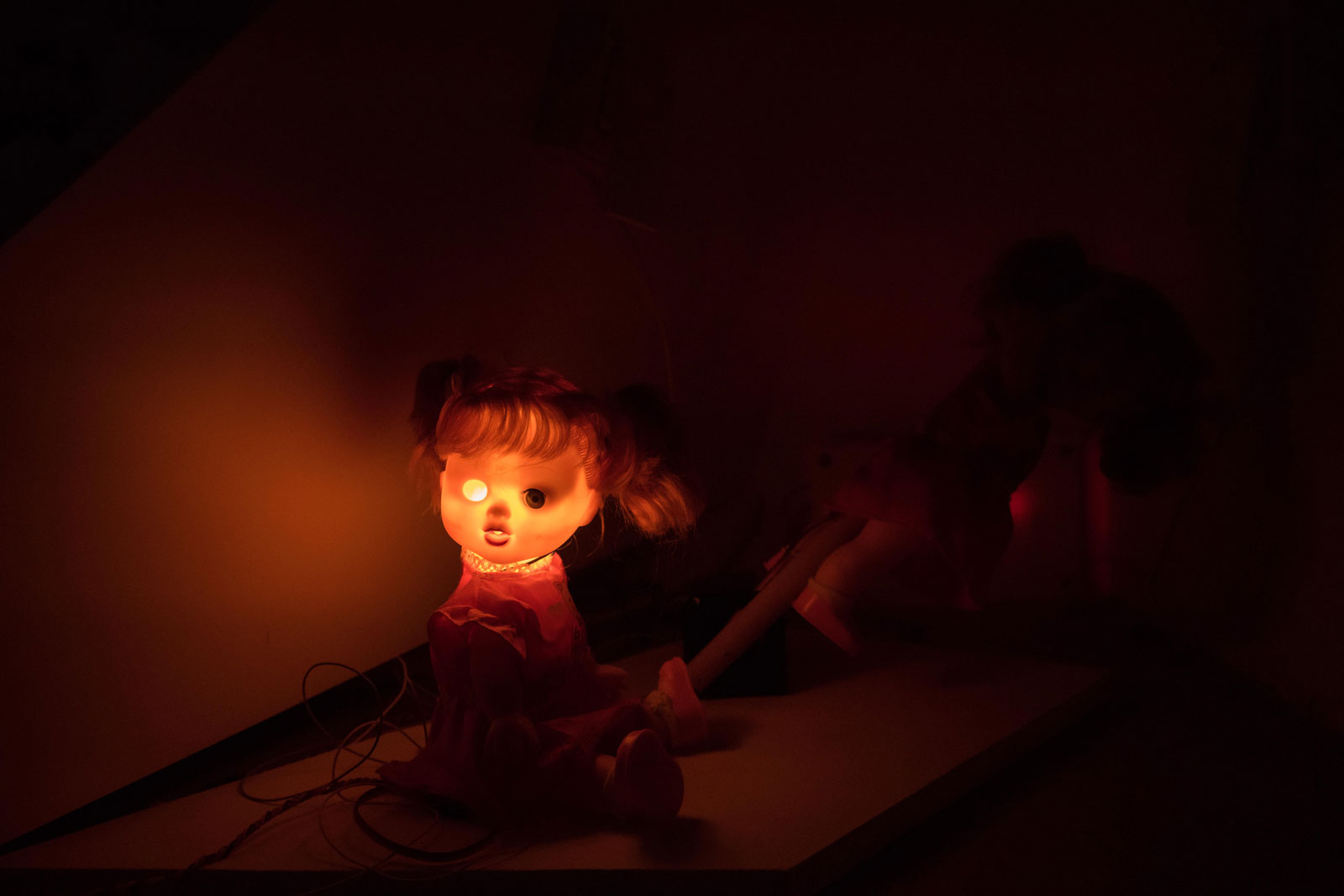annabelle’s room 《安娜的房間》(2018)
If we think that all dolls that move have spirits, I then wonder if we carry our spirits with us when we repetitively, day after day, go to work?
Or could every one of us, in fact, be someone else’s toy?
若我們認為會動的玩偶是有靈魂的話,我們每天重複地工作,是否同樣帶著靈魂地工作?
還是我們每一個人其實也只是別人的玩具?
I did an experiment in the exhibition. According to uncanny valley, I make those dolls moving in the room. And play some girl smiling sounds when people switched on the “light”.
It is also my doubt, why people think it is “terrible”? If we are someone else’s toys unintentionally, we should not feel terrible. UNLESS, we noticed they are not HUMAN.
“In aesthetics, the uncanny valley is a hypothesized relationship between the degree of an object’s resemblance to a human being and the emotional response to such an object. The concept of the uncanny valley suggests humanoid objects which appear almost, but not exactly, like real human beings elicit uncanny, or strangely familiar, feelings of eeriness and revulsion in observers. Valley denotes a dip in the human observer’s affinity for the replica, a relation that otherwise increases with the replica’s human likeness.” — according to wikipedia
在這個展覽,我做了一個實驗。根據恐佈谷理論,我將玩偶活動起來。當有人按牆上的開關制時,小女孩的聲音就會播出。
這也是我的疑問:為什麼會有人會覺得可怕?如果我不意識地成為別人的玩具時,理論上我們不會感到害怕。除非我們認為他們不是「人」。
「恐怖谷現象可以用以下想法解釋,如果一個實體「不夠擬人」,那它的類人特徵就會顯眼並且容易辨認,產生移情作用。在另一方面,要是一個實體「足夠擬人」,那它的非類人特徵就會成為顯眼的部份,在人類觀察者眼中產生一種古怪的感覺。」—維基百科
And finally, I am quite surprised the result – “defect” or “broken” during exhibition makes them more terrified.
最後,意想不到的結果是在展覽中途「漸漸失靈的玩偶」更可怕。











